Baby teeth, also known as primary or deciduous teeth, play a vital role in a child’s early development. While they may be temporary, these tiny pearly whites are anything but insignificant. In this article, we delve into the fascinating world of baby teeth, exploring their importance, eruption timeline, and essential care tips to ensure a healthy foundation for your child’s lifelong dental health. Check out our dentist’s guide to baby teeth.
Table of Contents
Let’s get started with our dentist’s guide to baby teeth
A guide to baby teeth is essential for parents and caregivers because it provides valuable information on teething, dental care, and important milestones. We’ve asked our dentists what you need to know about oral health, preventing tooth decay, dental visits, parental guidance and what you can expect.
What are baby teeth?
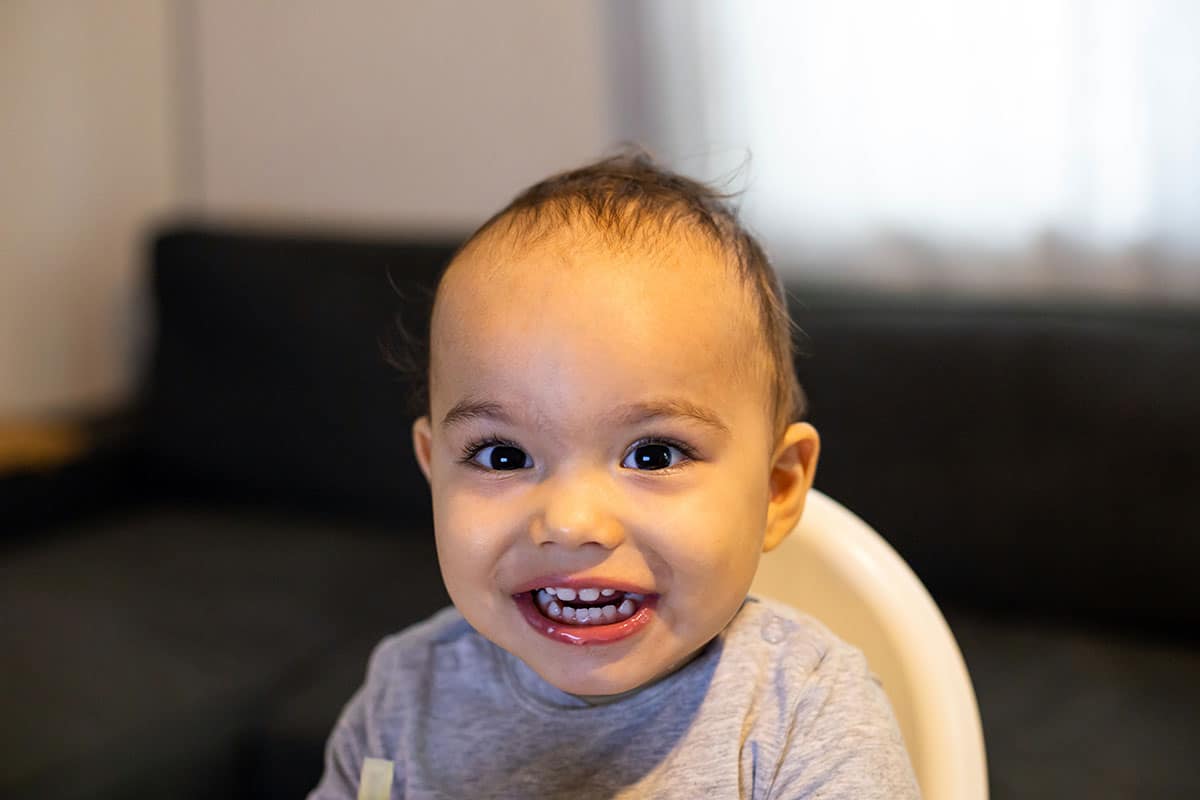
Baby teeth are the first set of teeth that typically begin to emerge in infants and young children. These teeth serve as placeholders for the permanent teeth that will come in later during childhood and adolescence. Like adult teeth, they comprise dental tissues, including enamel, dentin, pulp, and cementum. These dental tissues work together to form each tooth’s structure.
How do baby teeth differ from adult teeth?
Baby teeth and adult teeth differ in several ways, including their number, size, function, and development.
Here are the key differences between baby teeth and adult teeth:
1. Number of teeth
Baby teeth: Children typically have 20 baby teeth. This includes eight incisors, four canines, and eight molars.
Adult teeth: Adults generally have 32 permanent teeth. This includes eight incisors, four canines, eight premolars, and twelve molars (including four wisdom teeth).
2. Size and shape
Baby teeth: These teeth are smaller and more rounded than adult teeth.
Adult teeth: Permanent teeth are larger, more robust, and have distinct shapes to suit their functions.
3. Function
Baby teeth: Baby teeth are essential for early chewing, speech development, and guiding the eruption of permanent teeth.
Adult teeth: Permanent teeth are meant to last a lifetime and are responsible for efficient chewing, speech, and proper facial structure.
4. Composition
Baby teeth: Like adult teeth, baby teeth comprise dental tissues, including enamel, dentin, pulp, and cementum.
Adult teeth: The enamel of adult teeth is thicker and more durable, as permanent teeth must withstand a lifetime of wear and tear.
5. Eruption and shedding
Baby teeth: Baby teeth begin to emerge (erupt) around 6-10 months of age and continue to erupt until around age 2 or 3. They typically start shedding (falling out) around age 6, with the last baby teeth replaced by permanent teeth by early adolescence.
Adult teeth: Permanent teeth usually start erupting around age six and continue into the late teenage years or early twenties, with the wisdom teeth (third molars) typically erupting last.
6. Root development
Baby teeth: Baby teeth have shorter roots than permanent teeth, reflecting their temporary nature.
Adult teeth: Permanent teeth have longer and more firmly anchored roots in the jawbone.
7. Colour and translucency
Baby teeth: These primary teeth may appear whiter and more translucent than adult teeth.
Adult teeth: Permanent teeth often have a slightly yellowish or off-white coloration.
Why are baby teeth a thing, and why are they important?
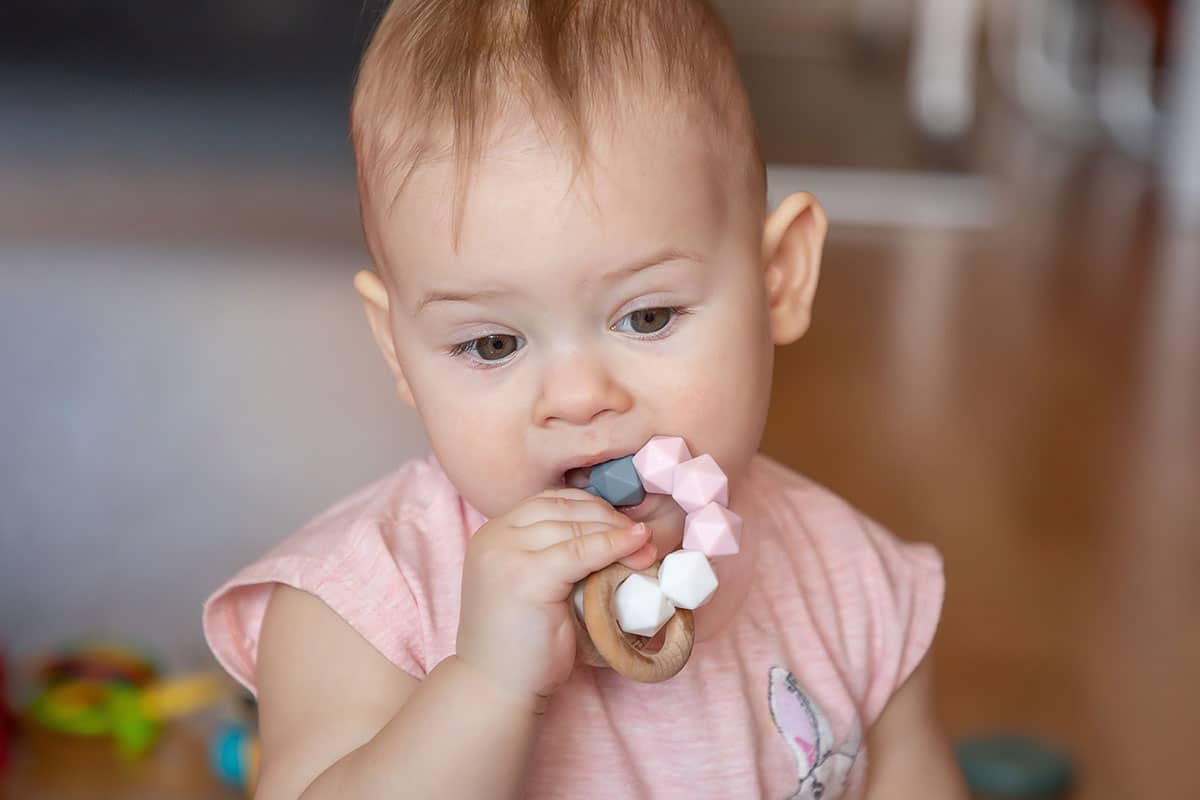
Baby teeth are essential for several reasons:
1. Chewing
They allow infants and toddlers to start chewing and processing solid foods, supporting proper nutrition and growth.
2. Speech development
Baby teeth play a crucial role in speech development, helping children learn to pronounce sounds and words correctly.
3. Jaw development
They guide the proper jaw development and provide the necessary space for permanent teeth to erupt.
4. Aesthetic and confidence
Baby teeth affect a child’s smile and facial appearance, impacting their self-esteem and social interactions.
When do babies start teething?
Babies typically start teething around 4 to 6 months of age, although the exact timing can vary widely from one child to another. Some babies may begin teething as early as 3 months, while others might not show signs of teething until 7 to 12 months.
The teething process involves the eruption of a baby’s first set of teeth, also known as baby or primary teeth. These teeth emerge through the gums and become visible in the mouth.
Teething can be challenging for babies and parents, as it can cause discomfort and irritability in infants. Common signs of teething include:
Increased drooling: Teething often stimulates saliva production, leading to excessive drooling.
Gum irritation: Babies may experience swollen and red gums around the areas where teeth are erupting.
Chewing and biting: Infants may chew on objects or their own fingers to relieve gum discomfort.
Irritability: Teething can make babies more irritable and fussy than usual.
Disrupted sleep: Some babies may have trouble sleeping during the teething process.
Changes in appetite: Teething can affect a baby’s appetite, leading to increased fussiness during feeding.
What to expect when your baby starts teething
As parents, teething can be a challenging phase to navigate. Here’s what you can expect and how to handle it:
Fussiness and irritability
Teething often causes discomfort and pain, which can lead to increased fussiness and irritability in your baby. They may be more clingy and demanding of your attention.
What to do: Offer comfort, cuddles, and soothing activities to help calm your baby. Gentle massages of the gums and using teething toys can provide relief.
Excessive drooling
Teething stimulates saliva production, resulting in excessive drooling. This can lead to wet clothes and skin irritation.
What to do: Keep a bib on your baby to absorb drool, and frequently wipe their chin and neck to prevent skin irritation. You can also use a gentle baby moisturizer.
Chewing and biting
Babies have a natural instinct to chew on objects when they’re teething. They may gnaw on their fingers, toys, or anything within reach.
What to do: Offer safe teething toys or rings for chewing. Ensure these toys are clean and designed for teething. Refrigerated teething toys can provide extra relief.
Sleep disruption
Teething discomfort can disrupt your baby’s sleep patterns. They may wake up more frequently during the night or have shorter naps.
What to do: Be patient and offer extra comfort during nighttime awakenings. Stick to a consistent bedtime routine to help your baby settle back to sleep.
Eating & appetite changes
Certain infants might experience alterations in their appetite and feeding habits. Discomfort while sucking can lead them to nurse or bottle-feed less frequently.
What to do: Offer softer foods and cold, soothing options like refrigerated applesauce or yogurt. Ensure they stay hydrated.
Gum swelling and redness
The area around the erupting tooth can become swollen and red. You may notice these changes when examining your baby’s gums.
What to do: Gently massage your baby’s gums with a clean finger or use a silicone finger brush designed for infants.
Ear pulling
Teething discomfort can sometimes radiate to the ear canal, leading to earache-like symptoms. Babies may pull or tug at their ears.
What to do: Monitor your baby’s ears for signs of infection, but keep in mind that ear pulling can also be a teething-related reflex. If in doubt, consult your pediatrician.
Diarrhea or diaper rash
Teething is sometimes associated with changes in bowel movements, which can result in diarrhea. Increased saliva production can also contribute to diaper rash.
What to do: Keep the diaper area clean and dry to prevent or manage diaper rash. Consult your pediatrician if diarrhea persists or is severe.
Keep in mind that teething is a passing stage in your baby’s growth. Though it can pose challenges, most infants successfully navigate it with the guidance and attention of their parents. If you have worries regarding your baby’s teething symptoms or if the discomfort appears severe or prolonged, it’s advisable to seek advice from your pediatrician to address potential underlying issues.
How many baby teeth are normal?
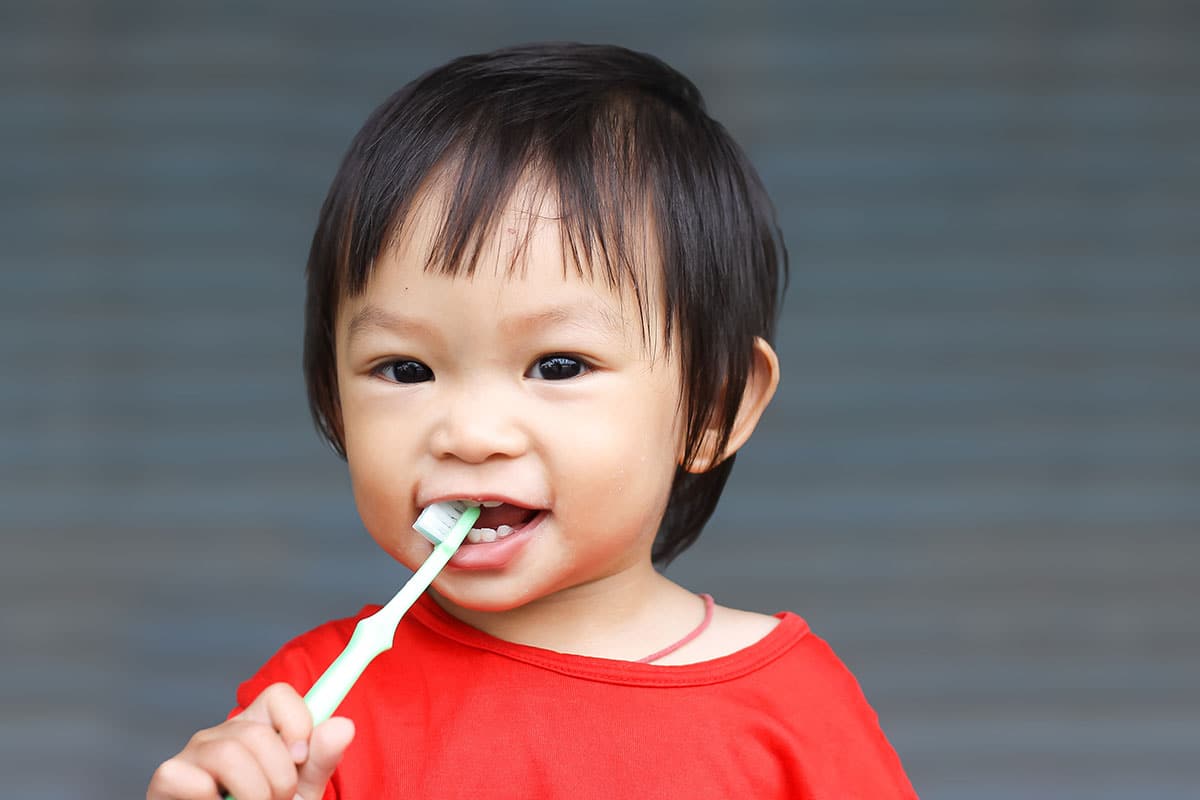
A full set of baby teeth, also known as primary or deciduous teeth, typically consists of 20. These 20 primary teeth serve as placeholders for the permanent teeth that will replace them as a child grows and matures.
Here’s the typical distribution of baby teeth:
Upper Jaw:
- 4 central incisors
- 4 lateral incisors
- 4 first molars
- 4 second molars
- 2 canines (cuspid teeth)
Lower Jaw:
- 4 central incisors
- 4 lateral incisors
- 4 first molars
- 4 second molars
- 2 canines (cuspid teeth)
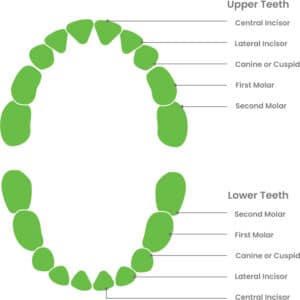
What order do baby teeth come in?
The typical sequence for baby teeth eruption is as follows:
Lower central incisors: Usually, the first to come in at around 6-10 months of age.
Upper central incisors: Follow shortly after, at about 8-12 months.
Upper lateral incisors: These teeth are the third to arrive, usually around 9-13 months.
Lower lateral incisors: Around 10-16 months.
First molars: Around 13-19 months.
Canines (cuspids): Usually appear between 16-22 months.
Second molars: Typically emerge between 25-33 months.
There are 20 primary teeth in a complete set: incisors, canines, and molars. As a child grows, these baby teeth gradually fall out to make way for the permanent teeth. The process of losing baby teeth and gaining permanent ones typically starts around age six and continues until the late teenage years.
Dental care for baby teeth and gums
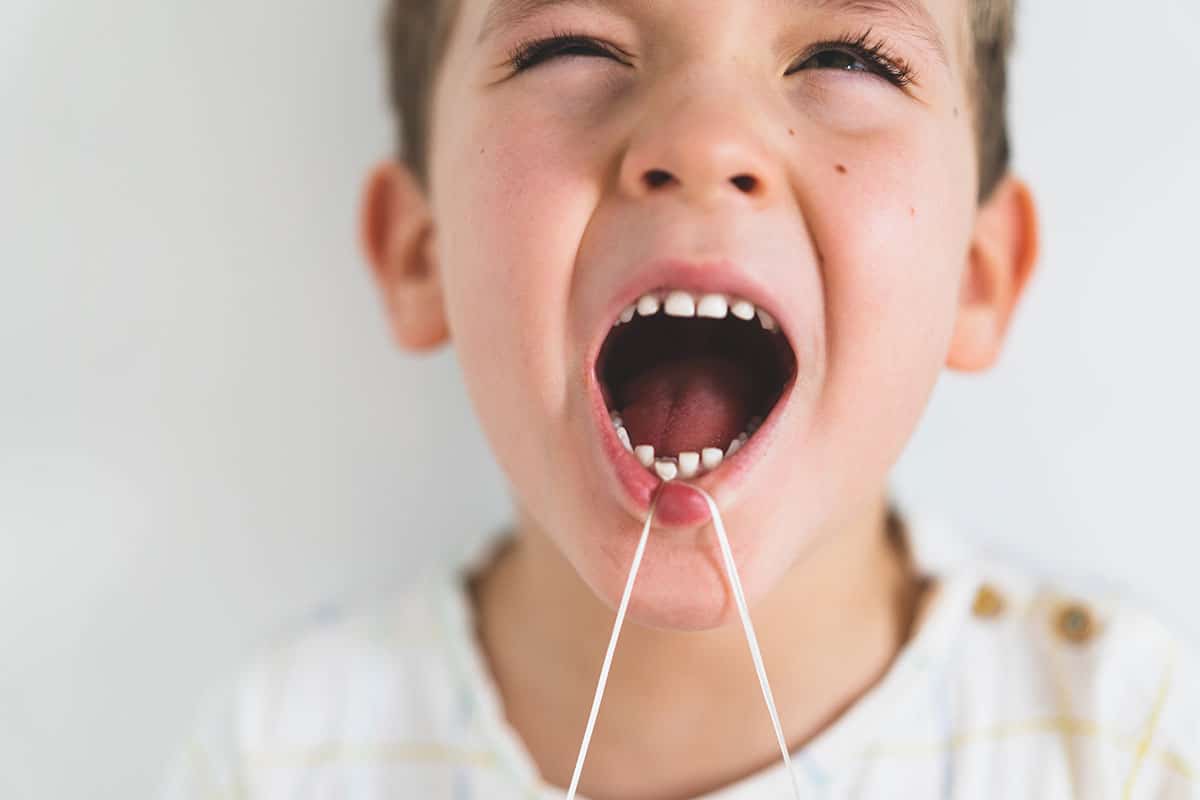
Proper dental care for baby teeth and gums is essential to establish good oral hygiene habits and promote healthy dental development. Here are some tips for caring for your baby’s teeth and gums:
1. Start early
Begin oral care even before your baby’s first tooth appears. After feedings, use a clean, damp washcloth or a soft infant toothbrush to wipe your baby’s gums gently. This helps remove milk residue and bacteria.
2. First tooth eruption
As soon as your baby’s first tooth emerges (around 6-10 months), use a soft infant toothbrush and a smear of fluoride toothpaste (about the size of a grain of rice) to gently clean the tooth. Gradually increase the toothpaste amount to a pea-sized portion as more teeth come in.
3. Dental check-ups
Schedule your baby’s first dental check-up within six months of the first tooth’s eruption or by their first birthday, whichever comes first. Regular dental visits allow the dentist to monitor oral health and provide guidance on proper care.
4. Avoid bottle decay
Avoid letting your baby fall asleep with a bottle containing sugary liquids (e.g., milk, formula, juice). Prolonged exposure to sugary liquids can lead to baby bottle tooth decay, particularly affecting the front teeth.
5. Limit sugary foods & drinks
As your child grows, limit sugary snacks and drinks in their diet. Encourage a balanced diet rich in fruits, vegetables, and whole grains.
6. Transition to a sippy cup
Around age 1, transition your child from a bottle to a sippy cup to help prevent prolonged exposure to sugary liquids. Avoid using a sippy cup as a pacifier.
7. Avoid sharing utensils
Avoid sharing utensils or licking your baby’s pacifier to prevent transferring bacteria from your mouth to your child’s mouth.
8. Teething relief
Offer teething rings or chilled (not frozen) teething toys to provide comfort during teething. Consult with your pediatrician before using teething gels or medications.
9. Supervise brushing
As your child ages, please encourage them to start brushing their teeth with your assistance and supervision. Gradually teach them the proper brushing technique.
10. Lead by example
Be a positive role model by maintaining good oral hygiene practices yourself. Let your child see you brushing and flossing your teeth.
11. Flossing
Start flossing your child’s teeth when adjacent teeth touch, typically around age 2 to 3. Use child-friendly flossers designed for small mouths.
12. Adding fluoride
Fluoride helps harden your baby’s tooth enamel to prevent tooth decay (more info on fluoride treatment here). Once your baby begins to chew on solid foods, it’s time to speak to your pediatrician about whether your child could benefit from fluoride supplements. Your dentist may be able to recommend a fluoride varnish application to help build stronger teeth.
Caring for your baby’s teeth and gums from an early age sets the foundation for a lifetime of good oral health. Regular dental check-ups, a balanced diet, and proper oral hygiene practices are essential components of this care.
Why is teething painful for babies?

When a baby is teething, they may exhibit a range of behaviours and symptoms as they cope with the discomfort and pain associated with the eruption of their teeth. Every baby is unique, so not all babies will experience the same signs of teething. However, teething is a very uncomfortable time, which makes for very irritable and cranky babies.
Teething can be painful for babies due to several factors:
Gum inflammation
As a baby’s teeth push through the gums, it can cause inflammation and pressure in the gum tissue, leading to discomfort and pain.
Irritated nerves
The pressure from erupting teeth can stimulate nerves in the gums, causing pain and discomfort.
Tissue distension
The teeth breaking through the gums can stretch the sensitive gum tissue, leading to soreness.
Increased saliva production
Teething often triggers increased saliva production, leading to drooling and skin irritation around the mouth and chin.
Chewing instinct
Babies have an instinct to chew on objects when they’re teething. This chewing can help relieve pressure and discomfort but can also lead to sore gums.
Discomfort while feeding
Sucking during breastfeeding or bottle-feeding can cause babies to apply pressure to their gums, leading to pain during meals.
Ear pain
The nerves in the back of the mouth are closely connected to the ear canal. Teething discomfort can sometimes radiate to the ears, leading to earache-like symptoms.
It’s important to note that while teething can be uncomfortable and even painful for some babies, it is generally a temporary phase in their development. Most babies experience relief once the tooth has fully erupted through the gum.
How to soothe a teething baby

Soothing a teething baby can be challenging, but there are several strategies you can try to help alleviate their discomfort and provide relief. Keep in mind that not all methods will work for every baby, so it may take some trial and error to find what works best for your child. Here are some ways to soothe a teething baby:
1. Chew toys and teething rings
Offer clean and safe teething toys or rings for your baby to chew on. These toys provide counterpressure to the gums, which can help alleviate pain and discomfort. Make sure the toys are designed for teething and free of small parts that could be a choking hazard.
2. Cool teething toys
Refrigerate or chill teething toys (do not freeze them) before giving them to your baby. The cold temperature can help numb the gums and provide relief.
3. Clean washcloth
Wet a clean washcloth, wring it out, and then chill it in the refrigerator. Allow your baby to chew on the cool, damp washcloth for comfort.
4. Gentle gum massage
Wash your hands thoroughly, and then use a clean finger to gently massage your baby’s gums. The gentle pressure can help relieve discomfort. You can also try using a silicone finger brush designed for babies.
5. Cold foods
Offer cold, soft foods that your baby can safely chew, such as refrigerated applesauce or yogurt. The cool temperature can soothe sore gums.
6. Pain relief gel or ointment
Some over-the-counter teething gels or ointments may provide temporary relief. Ensure that any product you use is specifically designed for babies and follow the dosage instructions carefully. Consult with your pediatrician before using any medication.
7. Pacifiers
Offer a clean pacifier for your baby to suck on. Sucking can provide comfort and help distract from teething discomfort. If you breastfeed, be cautious about using a pacifier too frequently to avoid nipple confusion.
8. Distraction
Engage your baby in play or cuddle time to distract them from the discomfort. Sometimes, a change of scenery or activity can help ease the fussiness associated with teething.
9. Iris root (Orris root) teething relief
Iris root can provide relief for your baby’s teething discomfort. Chewing on it can help alleviate the discomfort of emerging teeth. Before use, briefly submerge the teething root in boiling water.
10. Extra love and attention
Sometimes, all a teething baby needs is extra love and comfort from their caregivers. Hold and cuddle your baby to provide reassurance during this challenging time.
Remember that teething is a temporary phase in your baby’s development. If your baby seems to be in severe pain, has a high fever, or exhibits symptoms that concern you, consult your pediatrician for guidance and to rule out any other underlying issues.
In Conclusion
In conclusion, the journey of a teething baby can be challenging for both parents and infants. While it’s natural for babies to experience discomfort and irritability during this time, it’s important to remember that teething is a temporary and essential milestone in their development. Parents can help ease their baby’s discomfort and support them through this transitional period by providing love, comfort, and safe teething remedies. Regular dental check-ups and good oral hygiene practices are key to ensuring that those tiny emerging teeth, which signify the beginning of a lifetime of smiles, grow healthily and happily.
Check us out on Facebook and Twitter for daily information about Oral Health from Martindale Dental, or visit our offices in Hamilton and St. Catharines.
Have more questions?
Please contact us for all inquiries or to book an appointment with one of our convenient clinic locations. We look forward to hearing from you.




